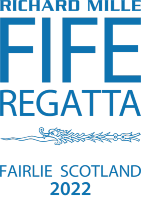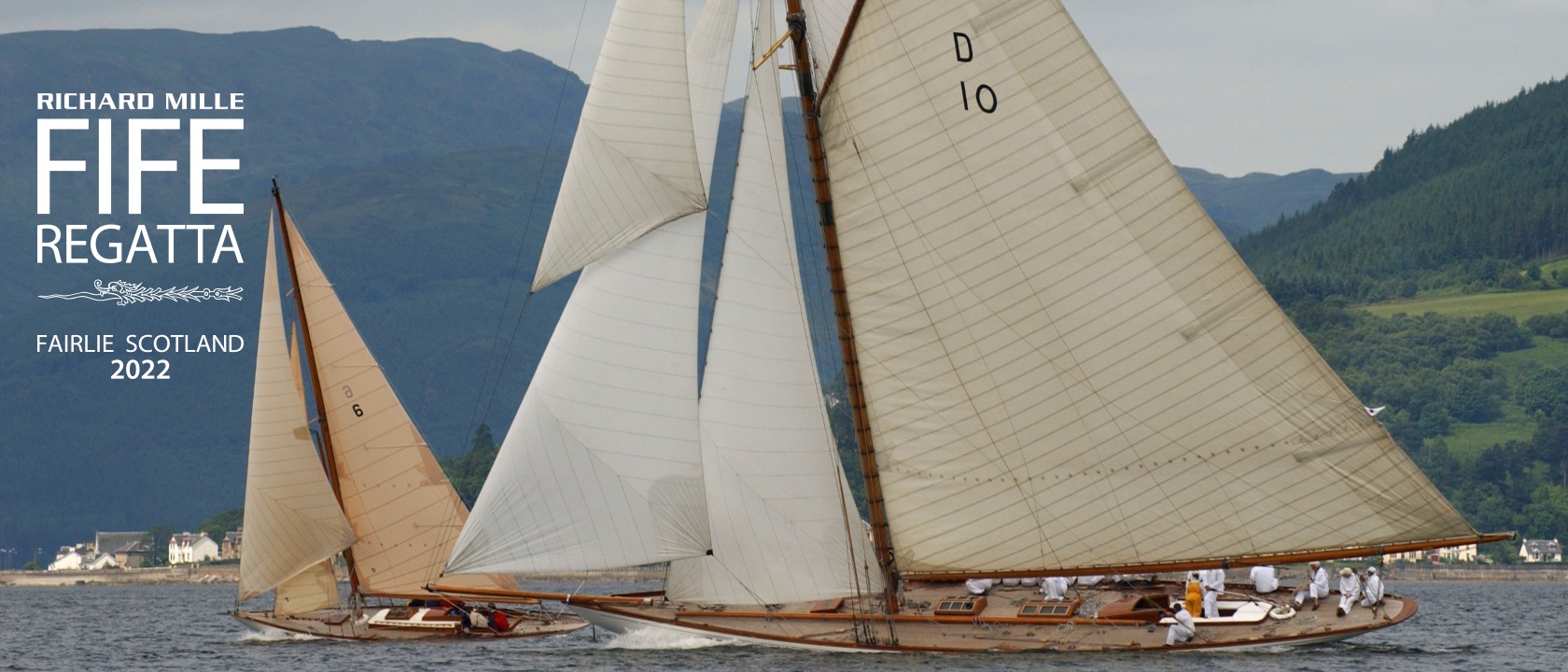The first Fife Regatta held in 1998 was initiated by local Fairlie artist Alastair Houston, several years earlier, after he had travelled out to the Mediterranean to work on yachts as a keen sailor.
After a period working among the ports, among the yachts, his eye was taken by some of the older vessels, which were immaculate wooden creations amongst the more garish modern yachts. The initial conversation with the owner of Sheevra revealed that she was built on the Clyde, in Fairlie, where he was from. The surprise and inspiration launched Alastair into a passion for painting these boats and following them around the circuit for the following decade.



In building a series a relationships with owners and crews, who shared his love of these timeless yachts, there came a point when the suggestion was made that perhaps they should come and sail on the waters they were built for, the Clyde. Among the influential owners who shared this idea was legendary french sailor, Eric Tabarly, whose Wm. Fife designed family boat, Pen Duick, would be celebrating her centenary in 1998. What better place to note this milestone, than Fairlie. The momentum had begun for the first Fife Regatta.
In a tragic turn of events, Eric was lost overboard and drowned on route to the event, and in the true spirit of the fleet the assembled Fife yachts continued in his memory and in celebration of their vessels designer William Fife.
It was a small gathering, yet it created a unique bond between the owners of Fife designed boats, which subsequent regattas were a testament to.
From the 19th to the 24th of June the regatta took place during a still and calm week of Scottish weather, almost in reverence to preceding events and also to their artisan yachts designer, William Fife.
The programme followed a traditional series, with a race around the Isle of Cumbrae to start, followed by a ‘Clyde Race’ towards Helensburgh. Following a day of rest for the fleet they started at Hunters Quay and set off for Rothesay. The Kyles of Bute race marked the final in the series.



Lord and Lady Glasgow held a prize giving at Kelburn Castle, which saw Solway Maid on equal points with Madrigal for first place. The overall winner was then decided with the toss of a coin, and Solway Maid took the award with the understanding that this was not a competitive event. It was certainly reinforced as every competitor was awarded that week.
The ten Fife Regatta entrants were:
- ELISE (63ft Schooner, 1911) [#601] Sailed from Salcombe, Devon.
- KENTRA (84ft gaff ketch, 1923) [#707] Sailed from Med.
- MADRIGAL II (48ft Bermudan cutter, 1951) Sailed from northern Spain.
- MAGDA IV (50ft Fife [#508], gaff cutter, 1904) Sailed from Norway
- MIGNON (28ft [#427] Bermudan sloop, 1898), formerly lug sloop, then based at Sandbank)
- MOONBEAM III (88ft gaff cutter, 1903, [#491] ) Sailed from Med. France
- PEN DUICK (50ft gaff cutter, Fife [#411] – Carrigaloe Gridiron & Works Co, Cork, 1898/c1955, sailed from Brittany.
- SOLWAY MAID (52ft bermudan cutter, 1940, [#825], sailed from Elba, Mediterranean.
- STARLIGHT (Conway Fife One Design ) Trucked from Beaumaris, Wales
- VAGRANT (22ft Fife/ Culzean Shipbuilding & Engineering, Maidens, gaff cutter, 1884) Scottish Maritime Museum, Irvine
To view additional photos of the 1998 Fife Regatta, please visit the 1998 Gallery.
Also in this section:
The Fife Dynasty :: 2013 Regatta :: 2008 Regatta :: 2003 Regatta :: 1998 Regatta

